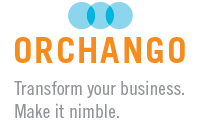Three tightly-integrated thrusts for challenging transformations
Clients have been engaging us to help execute challenging strategic transformations, change the corporate culture and fix “messy” situations. When the entire organization has to be transformed, it is usually the CEO or head of strategy who brings us on board. If the mandate is focused on a specific division, the divisional executive is generally our primary client. Word-of-mouth is how we get most of our business.
The way we go about helping execute a transformation is always highly tailored to the client’s specific context and situation. However, we generally work on three tightly integrated thrusts:
- Strategic & business planning ⇒ execution;
- Leadership & change capability building;
- Culture change − which is the thrust around which everything else evolves.
Thrust #1: Strategic & business planning ⇒ execution
Change management is simply a mean to an end, which is to successfully execute the strategy and business plan. However, strategy execution becomes way easier when you plan with change management in mind.
Also, strategic planning represents a critical opportunity to: a) promote and work on culture change (see thrust #3 below); and b) engage leaders and others in the transformation efforts.
Therefore, we work with our clients to:
- Transform the strategic / business planning & execution processes themselves;
- Facilitate strategic / business planning retreats;
- Support the execution of the business plan in various ways − including strategic transformation advisory for individual leaders and teams − while reinforcing the efforts to change the culture and build nimble change capabilities.
Thrust #2: Leadership & change capability building
Change execution is a game of proximity. Distant leaders cannot play the game effectively, whether you measure distance in terms of geography or hierarchical levels. Local leaders – throughout the organization and at all levels – represent the true keystone of change. That is because they have significantly more influence on their people than any distant senior executives.
Ubiquitous and nimble change leadership is key to surviving and thriving in the digital age. Organizations must move away from centralized change management models by boosting the change leadership of local managers.
Above all, they must equip leaders with a nimble toolkit compatible with today’s nature of change, which is fast-paced, ongoing and disruptive. The last thing local leaders need are step-by-step change management methodologies developed in the mid-to-late 90s, when the pace of change was still relatively slow and controlled (e.g. Prosci’s ADKAR; Kotter’s 8 Steps; Anderson’s 9 Phases; etc.).
As for culture change, numerous research studies have highlighted how critical local leaders at all levels are: they must bring to life the mindsets and behaviours of the target culture in everything they do, daily.
Therefore, we work with our clients on developing and delivering custom leadership development programs to support and boost their transformations.
- These programs can be a series of workshops; an ambitious year-long, action-learning Leadership Academy experience; or anything in between.
- The Culture Model we develop as part of thrust #3 (see below) serves as the foundation for these programs.
- To ensure maximum impact from the investment in leadership, we anchor leadership development to the execution of the business plan as well as the culture change and innovation imperatives. We do that through Learn and Execute® − our action-learning methodology.
- Through the STEP UP!™ game (ORCHANGO’s flagship simulated experience), leaders learn the essentials of the ORCHANGO Method™ for nimble change leadership.
- Finally, we leverage our CHECK UP!™ survey as necessary to monitor and fuel change capability building.
Additional reading:
Thrust #3 – Culture change
When an organization embarks on a major transformation, the need to evolve the corporate culture becomes central to many discussions. That is a good thing.
However, the result is a rather extensive list of mindsets and behaviours describing the target culture. That is a major problem. Indeed, it is hard for busy leaders and staff members to keep such a long list top of mind. As a result, culture change remains more talk than action.
We work with the executive team and others to develop a Culture [Change] Model, which we use to:
- Focus the culture change efforts on the most critical mindsets and behaviours of the target culture.
- Guide local leaders (see thrust #2 above) in becoming role models – which research has shown is the most critical success factor in culture change efforts.
- Provide the necessary foundation for the leadership development thrust (see #2 above).
- Engage the entire organization into the culture change process.
- Reinforce behaviours & progress on an ongoing basis.
- Multiply the effectiveness of ongoing performance management by embedding focussed discussions about culture.
In addition and as importantly, we work with our clients (particularly their HR functions) to further bring the Culture Model to life by activating all available levers for culture change.
Finally, we design and deliver specific interventions to tackle “hot” organizational issues as required, for example:
- Dysfunctional units.
- Lack of collaboration between divisions.
- Challenged leaders in pivotal positions.
- Etc.
